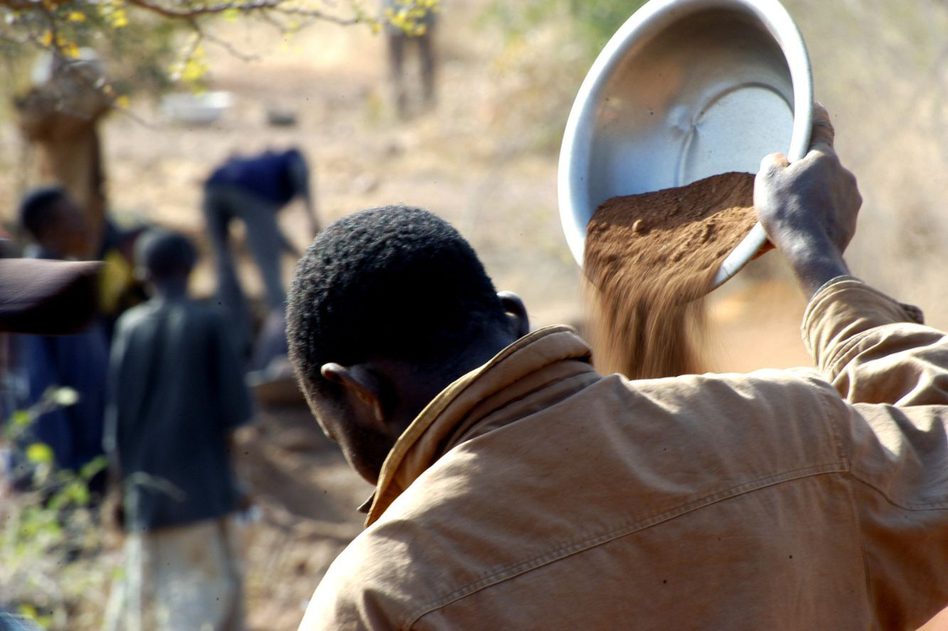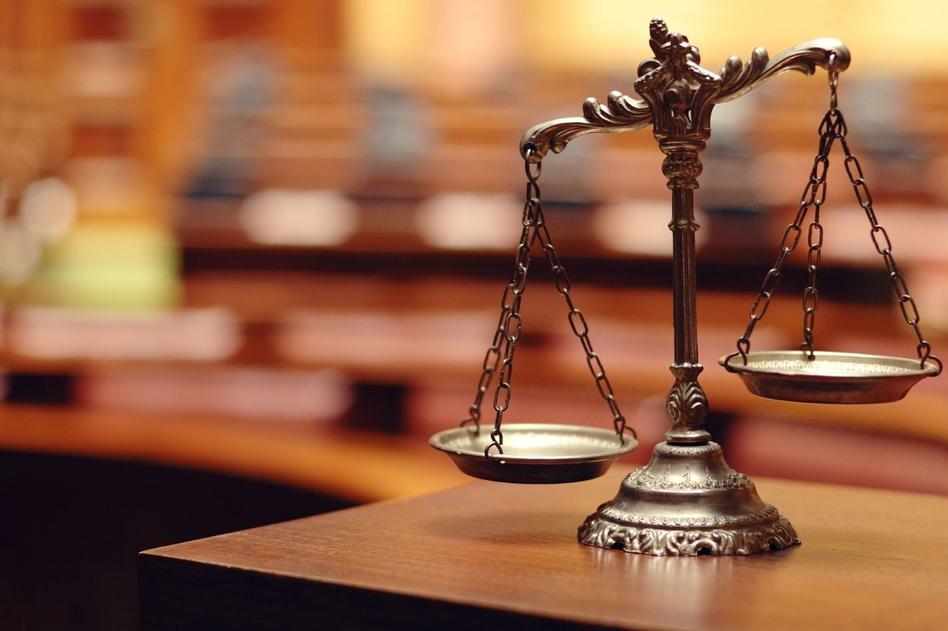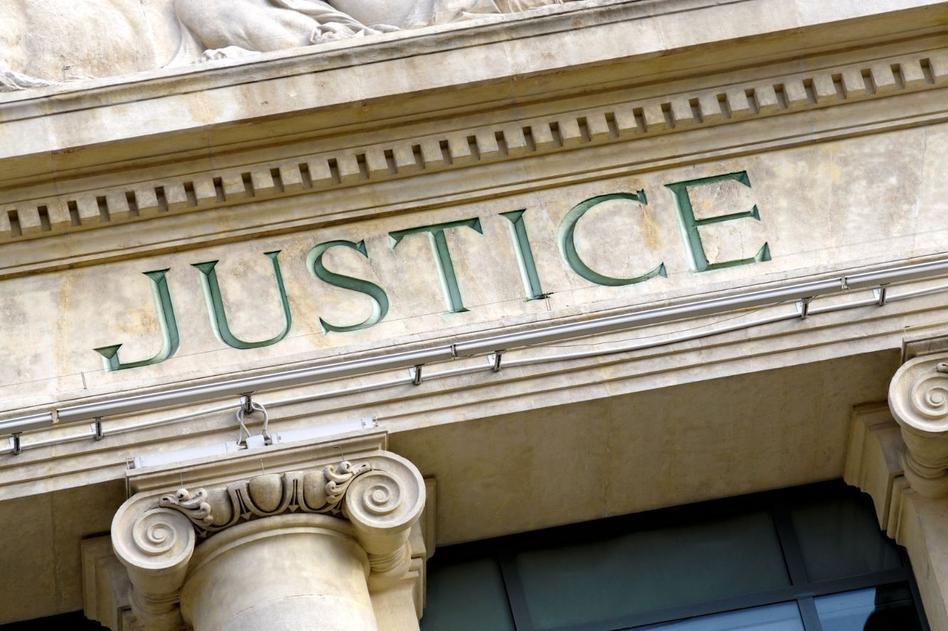Top Ten Business and Human Rights Issues in 2018
5 December 2017

Marking International Human Rights Day on the 10th of December 2017 IHRB has published its ninth annual list of the Top 10 Business & Human Rights Issues for the coming year.
In 2017, the focus of the UN Working Group on Business and Human Rights and the annual UN Forum on Business and Human Rights was “Realising Access to Effective Remedy”. Developing effective judicial and non-judicial mechanisms to ensure the right to remedy represents a major challenge for the business and human rights community. The OHCHR's Accountability & Remedy project, and ongoing debates at the UN concerning a new international legal instrument on business and human rights, highlight the complexities involved in making progress on this issue at the global level.
The 2018 Top 10 list is therefore dedicated to this theme and how key actors should be including it as part of efforts to implement the UN Guiding Principles on Business and Human Rights. The list is divided in two parts. Firstly, it focuses on five key issues where there are significant remedy gaps. Secondly, it highlights five developments aiming to bridge those gaps. Each of the 10 issues and mechanisms featured also include podcasts with experts offering their views on these challenges.
As always, IHRB welcomes your comments, feedback, and ideas.

Mitigating risks to worker safety
Trade unions and other advocates continue to face significant challenges in ensuring adherence to workplace rights. Many governments continue to hold to the view that enterprise and industry will go elsewhere if labour standards are enforced, due to the costs involved. And too many international brands maintain old business models based on driving down prices, which result in significant risks for workers.
The scale of workplace abuses in a range of business sectors cannot be under estimated, and the ongoing challenge of protecting the most vulnerable workers is huge. The international focus tends to be on factories exporting to rich countries, but many more operate under the radar, including factories in rich countries.
Companies – both multinational brands and their contractors – have the responsibility to ensure their actions are in compliance with local laws and international standards. In the apparel industry, efforts to address poor factory conditions, including the Bangladesh Accord and Alliance developed in response to the Rana Plaza factory disaster are welcome steps but cover only one industry and area, with accidents and other abuses pervasive elsewhere and in many other sectors. Tragedies like Rana Plaza show three types of failure: the failure to inspect on the part of the state; the failure to maintain factories on the part of local manufacturers; and the failure to monitor, on the part of foreign brands. These are compounded when unions are weak, foreign brands are many and competing with one another, wages are low, states are more keen to attract investment, and consumers are concerned about price above all. Compensation is a form of remedy, and the Bangladeshi initiatives go some way towards bridging the gap. But much remains to be done.
As companies play a more active role in monitoring the conduct of their suppliers around the world, they will have to find new ways of influencing states unable or unwilling to enforce compliance with labour standards. That includes giving workers a greater voice in preventing and providing remedy for abuses. Customers who want cheap goods will need to face the reality that paying more for consumer goods is a key element in protecting worker rights.
More targeted efforts to improve worker safety and strengthen participation in resolving workplace problems must be a priority in the year ahead. In 2018, the international community must raise the level of ambition to ensure workers are protected.

Remedying the broken system of recruitment fees
A major cause of forced labour in today’s global supply chains is the charging of recruitment fees to migrant workers. Many labour brokers charge such fees and hiring managers often extort payments from workers. Such fees are exploitative in themselves, but can also engender vulnerability to further exploitation. The problem is acute and gaps in regulation have allowed it to persist.
Fees charged to migrant workers are frequently obscured and bear little relationship to genuine costs of recruitment and deployment. For example, the genuine costs of recruiting a worker from Bangladesh to the Gulf are likely around $400-650 not including flights, but fees charged to a worker may be as high as $6,900. Given average monthly salary for unskilled labour is $240, such fees keep workers in debt and vulnerable for many years.
Some companies seek to redress this situation by reimbursing workers the recruitment fees they paid. Such reimbursement processes are welcome, but also come with significant challenges to making repayments.
Even in countries where fee-charging is legal, few records are kept or receipts issued to migrants, and where reimbursement processes are in place the risk of workers making fraudulent claims cannot be overlooked. The process is also complex to manage, particularly when only one brand among many demands reimbursement from a given supplier.
Reimbursement is also a short-term remedy, because it does not eliminate the endemic practice of charging exploitative fees. Even when payments are made, the retrospective nature of the process means workers can remain trapped in situations of debt bondage due to interest on loans taken to pay the fees.
Businesses should consider worker-paid recruitment fees as a red flag, requiring enhanced due diligence to prevent the practice, and dedicated effort to remedy the fee charging that slips through. In 2018, governments must also show leadership by establishing legislation and enforcement mechanisms to better manage recruitment intermediaries.
The “employer pays” model of migrant worker recruitment helps ensure ethical policies and practices. Only then will remedial measures such as reimbursement be viewed for what they are – evidence of a broken system in need of substantive change.

Eradicating discrimination against women and LGBTI+ people
The year 2017 saw a wave of attention to the persistent problem of sexual harassment in the workplace, bringing renewed focus on the responsibility of managers towards their employees and people with whom they do business. Such harassment comes on top of the many hurdles women face from recruitment to promotions, layoffs to unequal pay and under-representation on boards.
Awareness of discrimination against LGBTI people at work and as consumers also increased in global prominence during 2017 and new UN Corporate Standards for Business to tackle discrimination against LGBTI people were released to help companies address the issue, with dozens already endorsing the Standards.
In the year ahead, companies will need to develop stronger mechanisms to prevent harms against women, LGBTI individuals and others. They must renew their efforts to promote good practices, which value all employees, customers and other stakeholders. This includes showing zero tolerance towards bullying, intimidation, or harassment of women, LGBTI people, or other minorities and ensuring access to effective remedies when abuses occur. Companies will also have to enhance their diversity and inclusion programmes, including vigorously seeking out talent from under-represented groups, to make their workforce look like the world in which they operate.

Addressing injustices in interactions with communities
Oil, mining, and gas companies operating in conflict zones and countries with chronic weak governance continue to be in the spotlight for involvement in rights abuses despite decades of controversy, court cases, and efforts to improve performance.
Some have sought to respond, in part by forming multi-stakeholder initiatives involving civil society and governments on issues such as managing relations with security providers (the Voluntary Principles) and tackling corruption (the Extractive Industry Transparency Initiative).
Yet despite long track records, many companies and governments are still not members of these initiatives (and the United States has recently said it is pulling out of domestic implementation of the leading extractives transparency initiative).
These initiatives are important in creating the mechanism to prevent harm, but neither do the proponents of the initiatives claim, nor does performance on the ground suggest, that they are effective remedies. How can access to effective remedies be strengthened given that monitoring and enforcement mechanisms remain inadequate, and that victims have little choice but to rely on cumbersome and costly litigation? Companies can do more – by being proactive in reaching out communities affected by their impacts, and several companies are doing just that, through tailor-made programmes in their areas of operation.
The problem will become more acute as companies from the global south are increasingly investing in risky environments. The Chinese guidelines on social responsibility for outward investment are encouraging and a growing number of extractive companies have begun establishing grievance mechanisms to address disputes with communities, while others engage in regular dialogue to address potential areas of dispute. There are also instances of stand-alone ad hoc responses to serious concerns.
In 2018, companies should commit to applying the same rigor in investigating human rights issues as they have shown on safety, with retrospective analysis to understanding root causes and developing solutions and remedies. Clearer rules are needed to assess impacts and mitigate risks – not only to business but also to people. Meaningful consultation and transparent conduct should be ingrained in contracts as the first step, with fair compensation, restitution, rehabilitation, relocation, and other community-specific solutions as remedies.
Until fundamental shifts in risk management are implemented, human rights due diligence will appear inadequate and remedy elusive.

Making big data freer and safer
Access to big data – vast amounts of information accessible easily and quickly and the the technology that enables the dissemination of the data rapidly – has significantly enhanced the ability of the state to monitor and control behaviour. Political parties and movements for example are using big data to analyse information and individual choices to sharpen and tailor political messages to influence electoral outcomes, as seen in 2016 in the UK’s Brexit referendum and the US presidential election.
Propaganda, surveillance, and clamping down on access to information have all occurred in the past. The difference now is that big data and technology relying on algorithms allow companies and governments to process vast amounts of data efficiently and quickly, and to make nuanced conclusions and judgments which have lasting impacts on human rights and society. Efforts like the Global Network Initiative have offered guidance for policymakers, but the scale of the problem is not understood fully, which makes remedial measures inadequate and elusive.
We are still only just beginning to learn the full human rights implications of this new frontier. The year ahead will see stepped-up efforts by a range of actors to understand and explain the baleful influence of technological advances.
Companies will have to examine the potential adverse impacts of their innovations and use of big data so that they do not undermine human rights. Technological progress offers advantages provided it is harnessed properly, but it can pose grave risks to privacy, security, and safety, as well as influence public opinion.
Stop-gap solutions will not offer effective remedy: extending the notion of informed consent and respecting the agency and dignity of the individual will have to form the core of any remedy that offers redress to those affected.

Strengthening dispute settlement mechanisms between companies and rights-holders
Since 2000, individuals or groups who have been adversely affected by the activities of companies have turned to the National Contact Point (NCP) mechanism of the Organisation for Economic Cooperation and Development (OECD) to seek remedy. NCP decisions are not legally-binding and the mechanism is not a judicial body. The process is meant to be non-adversarial and conducted in good faith, and it concludes with a statement or report intended to resolve the problem at hand.
Since its inception, the NCP mechanism has evolved to tackle more complex cases. In the absence of an overarching international mechanism addressing corporate human rights impacts, this process has seen an uptake beyond the 35 OECD member-states, with 48 countries now having set up NCPs. Over 400 ‘specific instances’ have been examined in over 100 countries.
Some analysts contend that NCPs can potentially provide useful remedies, particularly in instances where the human rights abuses involved are not systematic or grave, and which do not require complex examination of law. Others have been critical of the process because of few ‘specific instances’ have led to outcomes to the satisfaction of the complainants and the outcomes are not enforceable.
For the NCP mechanism to be effective for victims and rights-holders, the OECD will have to continue to clarify and communicate what the NCPs can and cannot do. Countries setting up NCPs too will face greater pressure to streamline processes for consistent responses in similar instances.
The OECD is aware of the mechanism’s limits, and in 2011 reinforced its voluntary peer review process where up to four other NCPs review another NCP to identify strengths and areas of improvement. Since 2009, seven NCPs have subjected themselves to peer reviews. In the absence of other forms of arbitration and with difficulties in initiating litigation, those supporting NCP processes will face increasing calls to do more to strengthen this important non-judicial mechanism.

Creating new mechanisms to resolve business and human rights disputes
Over the past year, significant steps were taken to advance proposals for a new arbitration mechanism focused on resolving disputes arising from business related human rights abuses.
In August 2017, an expert Working Group published a paper based on extensive consultations proposing a new private civil law arbitration mechanism focused on victims-to-business and business-to-business issues. Such a mechanism would be available to individuals and communities claiming corporate-related rights abuses as well as to companies seeking to hold their business partners accountable for abuses.
Those leading this initiative acknowledge these human rights abuses should ideally be resolved in national courts but point out that in many countries, courts are not available or suitable for such cases due to a range of factors including armed conflicts, corruption, or undue political influence.
The year ahead will determine whether momentum can build around proposals for new forms of business and human rights dispute resolution. A number of important questions will need to be tackled, including whether existing rules can be adapted to address the special requirements of human rights-focused arbitration, including the need for greater transparency, the ability to accommodate multiple victims in a single proceeding, and the importance of new arbitration bodies interacting effectively with human rights mechanisms at national, regional, and international levels.

Enabling civil litigation for grave abuses
Failure on the part of governments to prosecute companies accused of grave human rights abuses, including involvement in forced labour, torture, or killings is often due to lack of resources, difficulty in obtaining evidence, or lack of political will. This has led trial lawyers to bring cases against companies in the jurisdictions where they are registered or headquartered.
The record of such litigation remains mixed. Some cases have remained unresolved for decades, often on grounds of forum non conveniens (or ‘inconvenient forum’), and it is still a formidable burden for victims to penetrate the complicated layers and make the international headquarters accountable for the conduct of their subsidiaries, a process known as ‘piercing the corporate veil’. In a few cases, companies have settled out of court without admitting any wrongdoing, meaning fewer precedents establishing the legal limits or rules on particular questions that others can follow. The US Supreme Court’s 2013 decision in the Kiobel case has narrowed the applicability of one of the few avenues for such litigation globally.
In the absence of other meaningful alternatives and the continuance of human rights abuses, more civil cases will likely be filed in the year ahead, and there will be greater calls to enable victims to receive public funding to bring claims against companies. Efforts to strengthen domestic legal infrastructure in host states will continue to be a priority, as will steps to reduce the burden of costs on rights-holders. Demands for companies to make public their impact assessment reports will also build, as part of measures to reassure various constituencies that companies are undertaking adequate due diligence to anticipate adverse human rights impacts.

Removing barriers to prosecuting companies in domestic jurisdictions
Over recent years, civil society organisations have mounted concerted campaigns to get governments to live up to their obligation to protect people from human rights abuses involving companies by criminally prosecuting companies suspected of having caused harm. Leading legal experts developed a set of ‘corporate crimes principles,’ released in 2016, to clarify state duties and seek to address the ongoing impunity gap for corporate rights abuses, particularly in instances involving multiple jurisdictions.
Lawyers, scholars, and UN experts have long reflected on the apparent inability of national governments to prosecute companies domiciled in one country for their activities elsewhere. Prosecutors find evidence-gathering in such cases to be difficult and judges are often skeptical, both on questions of law and fact. The Anvil case is instructive – victims could not get justice in Australia, Canada, or the Democratic Republic of Congo. Only in August 2017, the African Commission on Human and People’s Rights criticised Anvil, provided $2.5 million as compensation to the victims, and urged the Congolese government to prosecute those responsible for the abuses.
Civil society groups will continue to challenge governments in 2018 to use their domestic and appropriate international legal frameworks to prosecute companies. Success depends on prosecutors making such cases a priority, being able to gather evidence, and having financial resources to pursue investigations, all of which requires political will and support from their governments.

Developing greater accountability and access to remedy through a new international instrument
Efforts to advance international legal accountability for corporate abuses of human rights saw further significant developments during 2017. In October, the UN Human Rights Council inter-governmental working group, which is mandated to develop a proposed legally binding instrument on business and human rights, met for the third time and discussed an “elements” document prepared by the Chair delegation of Ecuador.
Debates continue on a range of complex subjects. These include whether any new treaty or other legally binding instrument should impose international human rights obligations directly on companies; if new home state obligations as well as greater international cooperation and capacity building can be achieved through such a process; whether business activities that are covered by the treaty should only be of a “transnational” character; and how a new instrument could include effective and binding requirements for corporate human rights due diligence.
The year ahead will likely see continued national efforts such as those taken by Dutch and French legislatures in 2017 to put in place human rights due diligence and reporting requirements for large companies. These and related steps will undoubtedly influence international progress and lead to further reflections on what approaches can most productively bridge existing remedy gaps in many countries for those whose rights have been violated by corporate actions or inactions.



